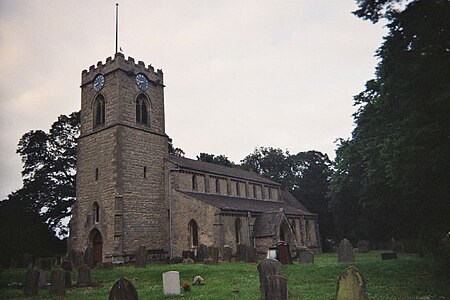Scawby

Scawby is a village and civil parish in North Lincolnshire, England. It is situated 2 miles (3 km) south-west from Brigg, and just east from the A15 road, and south from the M180 motorway. According to the 2001 Census, Scawby population (including Sturton) was 2,277, reducing slightly to 2,243 at the 2011 census.The village is noted for the Nelthorpe family who owned the manor and lived at Scawby Hall. Sir John Nelthorpe founded Brigg Grammar School in 1669. Sturton was formerly a separate hamlet a little to the south of Scawby, but development of the land between the two has incorporated the settlement into the main village. Scawby Brook, situated to the east just outside Brigg, is also partly within the parish. Also in the parish, to the west of the main village, is the roadside hamlet of Greetwell on the B1398 road.
Excerpt from the Wikipedia article Scawby (License: CC BY-SA 3.0, Authors, Images).Scawby
West Street,
Geographical coordinates (GPS) Address Nearby Places Show on map
Geographical coordinates (GPS)
| Latitude | Longitude |
|---|---|
| N 53.53574 ° | E -0.540009 ° |
Address
West Street
West Street
DN20 9AJ
England, United Kingdom
Open on Google Maps








